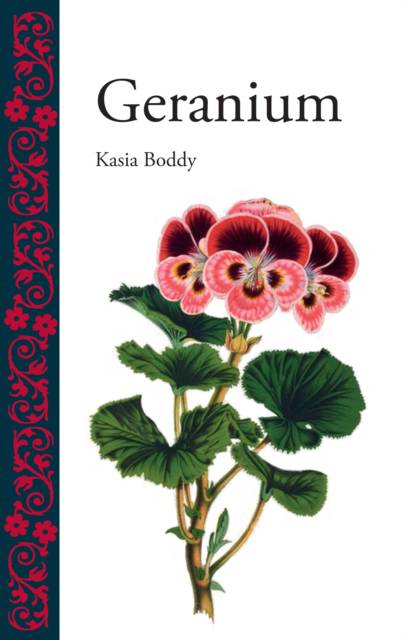
- Afhalen na 1 uur in een winkel met voorraad
- Gratis thuislevering in België vanaf € 30
- Ruim aanbod met 7 miljoen producten
- Afhalen na 1 uur in een winkel met voorraad
- Gratis thuislevering in België vanaf € 30
- Ruim aanbod met 7 miljoen producten
Zoeken
Omschrijving
They are sometimes called storksbills and originated in South Africa. They may be star-shaped or funnel-shaped, and they range in color from white, pink, and orange-red to fuchsia and deep purple. The geranium and its many species, much loved and also much loathed, have developed since the seventeenth century into one of the most popular garden plants. In this book, Kasia Boddy tells the story of geranium's seemingly inexorable rise, unearthing the role it has played in everything from plant-hunting and commercial cultivation to alternative medicine, the philanthropic imagination, and changing styles in horticultural fashion. Boddy shows how geraniums became the latest fad for wealthy collectors and enterprising nurserymen after they were first collected by Dutch plant-hunters on the sandy flats near present-day Cape Town. She explains that the flower would not be rare for long--scarlet hybrids were soon found on every cottage windowsill and in every park bedding display, and the backlash against the innocent plant followed quickly on the heels of its ubiquity. Today, geraniums can be found throughout the world, grown as annuals in the regions too cold for them to regenerate. In addition to exploring the history of geraniums, Boddy reveals the plant's other uses, including how they are cultivated and distilled for their scents of citrus, mint, pine, rose, and various spices to use in perfumes. With their edible leaves, they are also used to flavor desserts, cakes, jellies, and teas, and some people believe that certain species provide an effective treatment for a cough. Featuring over one hundred illustrations, Geranium shows how the plant is portrayed in painting, literature, film, and popular culture, and provides an intriguing example of the global industrialization of plant production.
Specificaties
Betrokkenen
- Auteur(s):
- Uitgeverij:
Inhoud
- Aantal bladzijden:
- 216
- Taal:
- Engels
- Reeks:
Eigenschappen
- Productcode (EAN):
- 9781780230481
- Verschijningsdatum:
- 15/02/2013
- Uitvoering:
- Hardcover
- Formaat:
- Genaaid
- Afmetingen:
- 140 mm x 218 mm
- Gewicht:
- 566 g

Alleen bij Standaard Boekhandel
+ 50 punten op je klantenkaart van Standaard Boekhandel
Beoordelingen
We publiceren alleen reviews die voldoen aan de voorwaarden voor reviews. Bekijk onze voorwaarden voor reviews.











